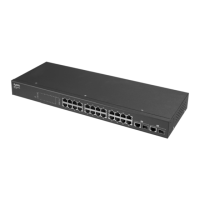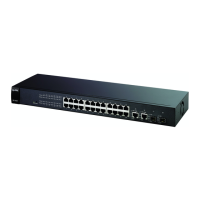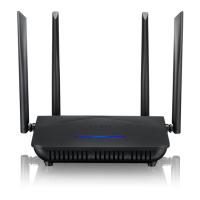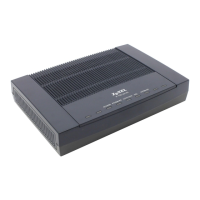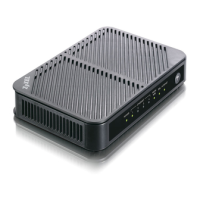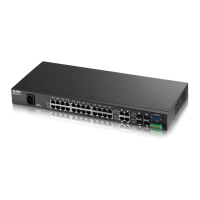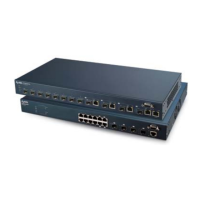IES-1000 User’s Guide
ADSL Module Port Setup 11-1
This chapter explains how to configure individual ports on the AAM-1008.
11.1 ADSL Module Port Setup Overview
The web configurator allows you to configure settings for the ADSL Access Module’s ports.
11.2 ADSL Standards Overview
The ADSL module supports both the G.lite and the G.dmt standards. G.lite is intended to minimize the cost for the
consumer market.
Table 11-1 Maximum Transfer Rates of the ADSL Ports
STANDARD MAXIMUM DOWNSTREAM MAXIMUM UPSTREAM
G.dmt (AAM1008-61) 8160 Kbps 1024 Kbps
G.dmt Annex B (AAM1008-63) 8160 Kbps 1024 Kbps
ETSI (AAM1008-63) 8160 Kbps 1024 Kbps
G.lite (AAM1008-61) 1536 Kbps 512 Kbps
ANSI T1.413 issue 2 (AAM1008-61) 8160 Kbps 1024 Kbps
11.3 Downstream and Upstream
Downstream refers to traffic going out from the DSL module to the subscriber’s DSL modem or router. Upstream
refers to traffic coming into the DSL module from the subscriber’s DSL modem or router.
11.4 Profiles
A profile is a table that contains a list of pre-configured DSL settings. Each DSL port has one (and only one)
profile assigned to it at any given time. You can configure multiple profiles, including profiles for troubleshooting.
Profiles allow you to configure DSL ports efficiently. You can configure all of the DSL ports with the same
profile, thus removing the need to configure the DSL ports one-by-one. You can also change an individual DSL
port by assigning it a different profile.
You could set up different profiles for different kinds of accounts (for example, economy, standard and premium).
Assign the appropriate profile to a DSL port and it takes care of a large part of the port’s configuration. See later
in this chapter for how to configure profiles. You can only delete a profile when no DSL port is set to use it.
Chapter 11
ADSL
Module Port Setup
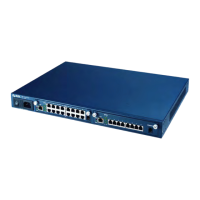
